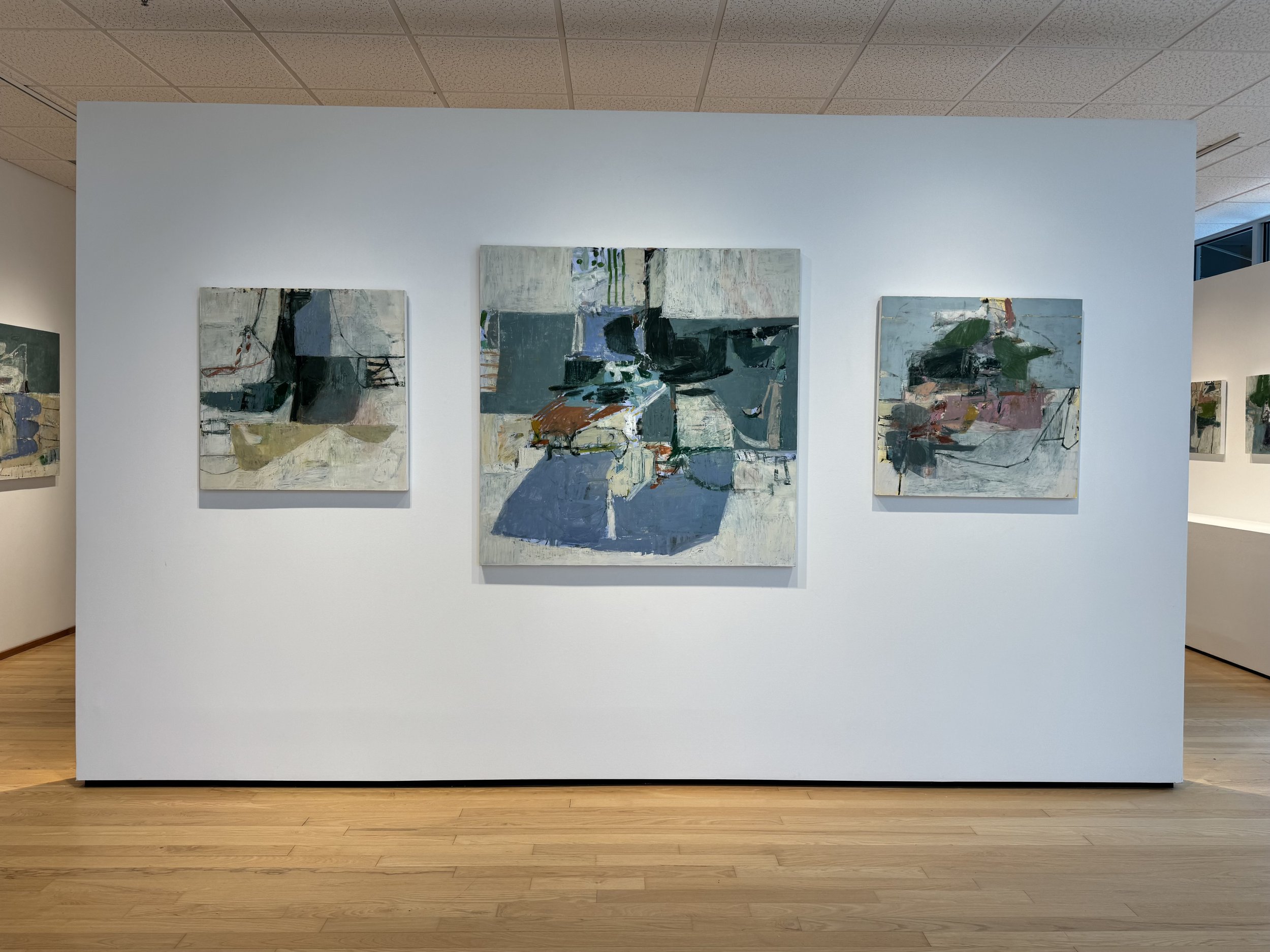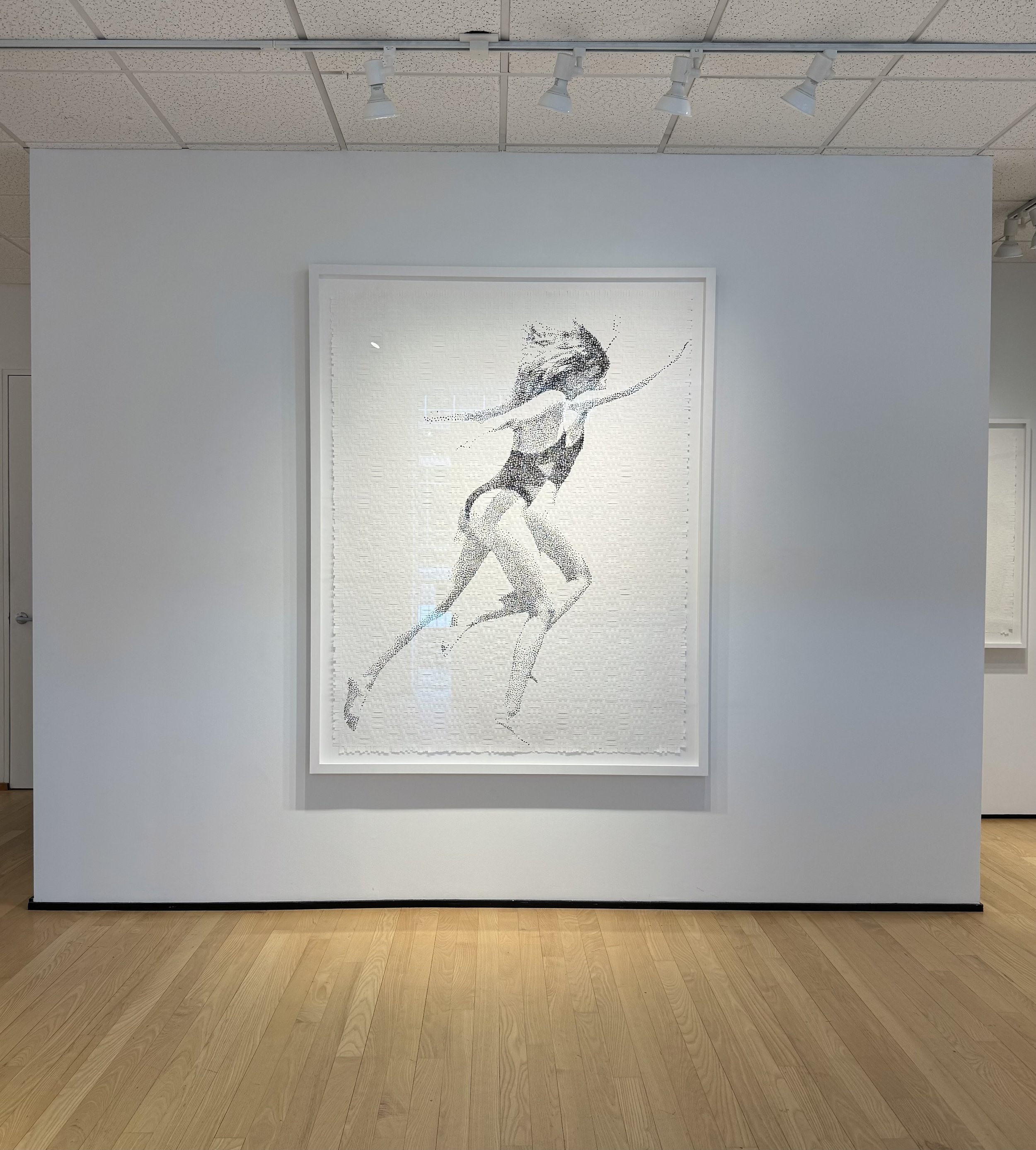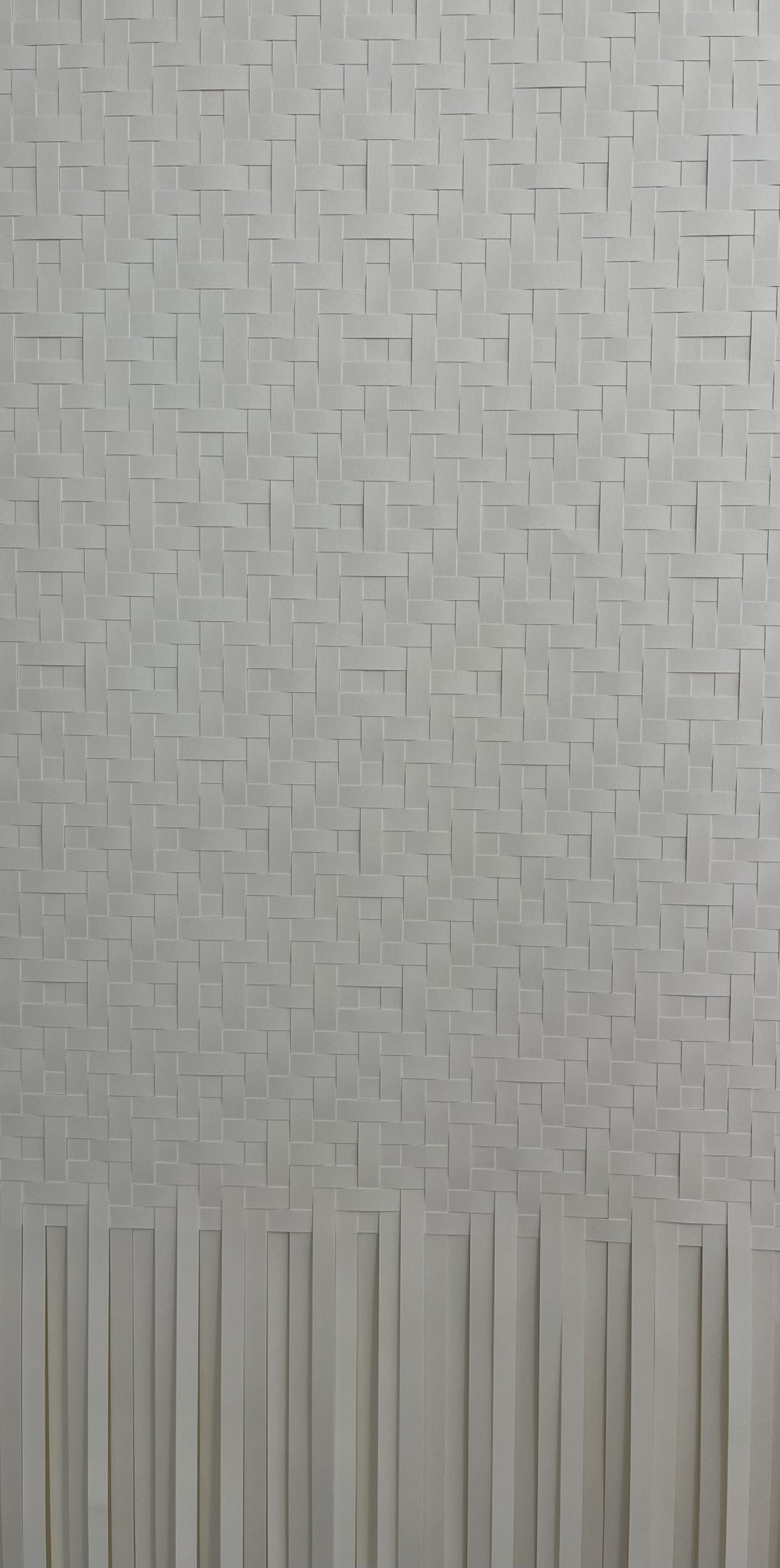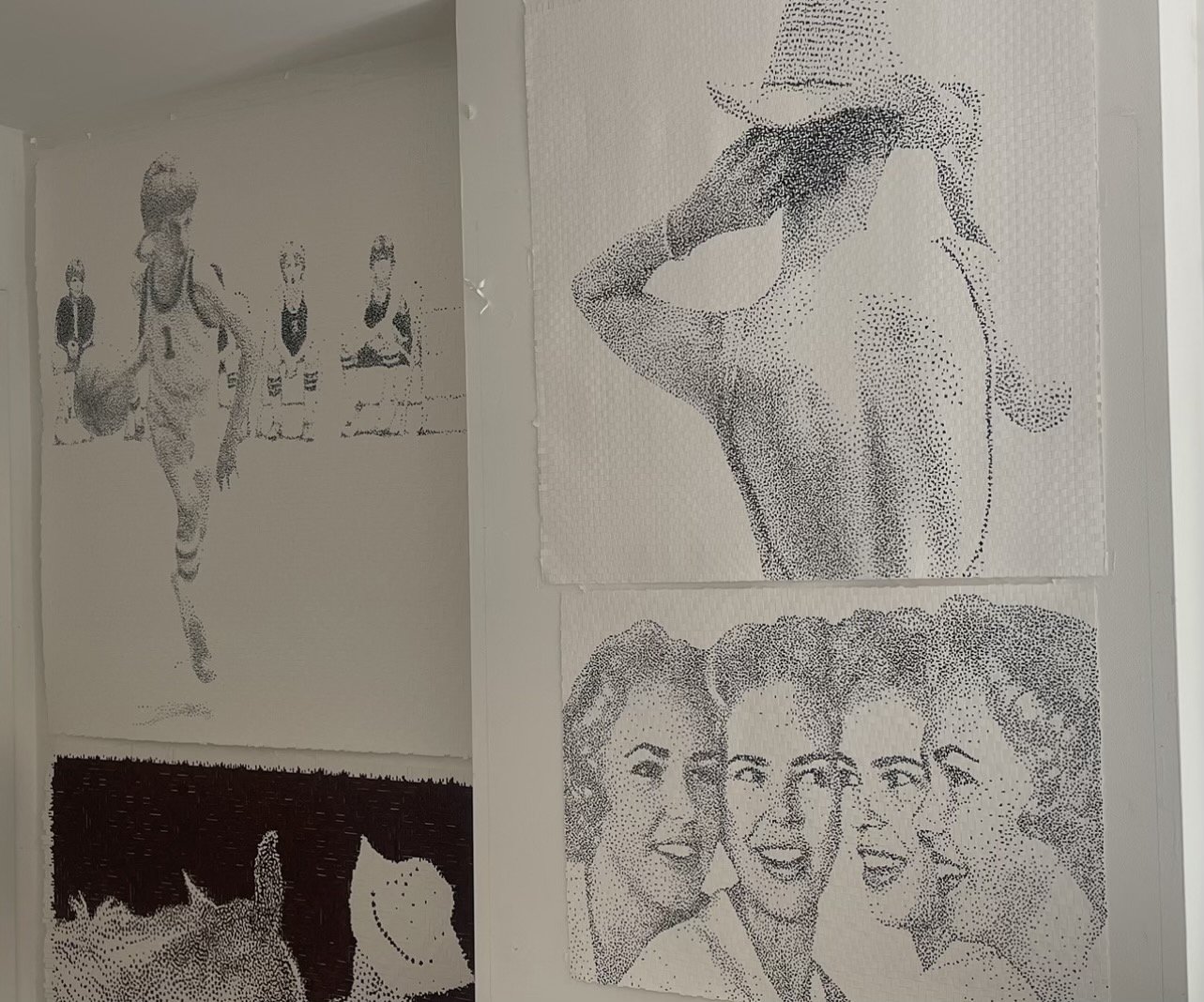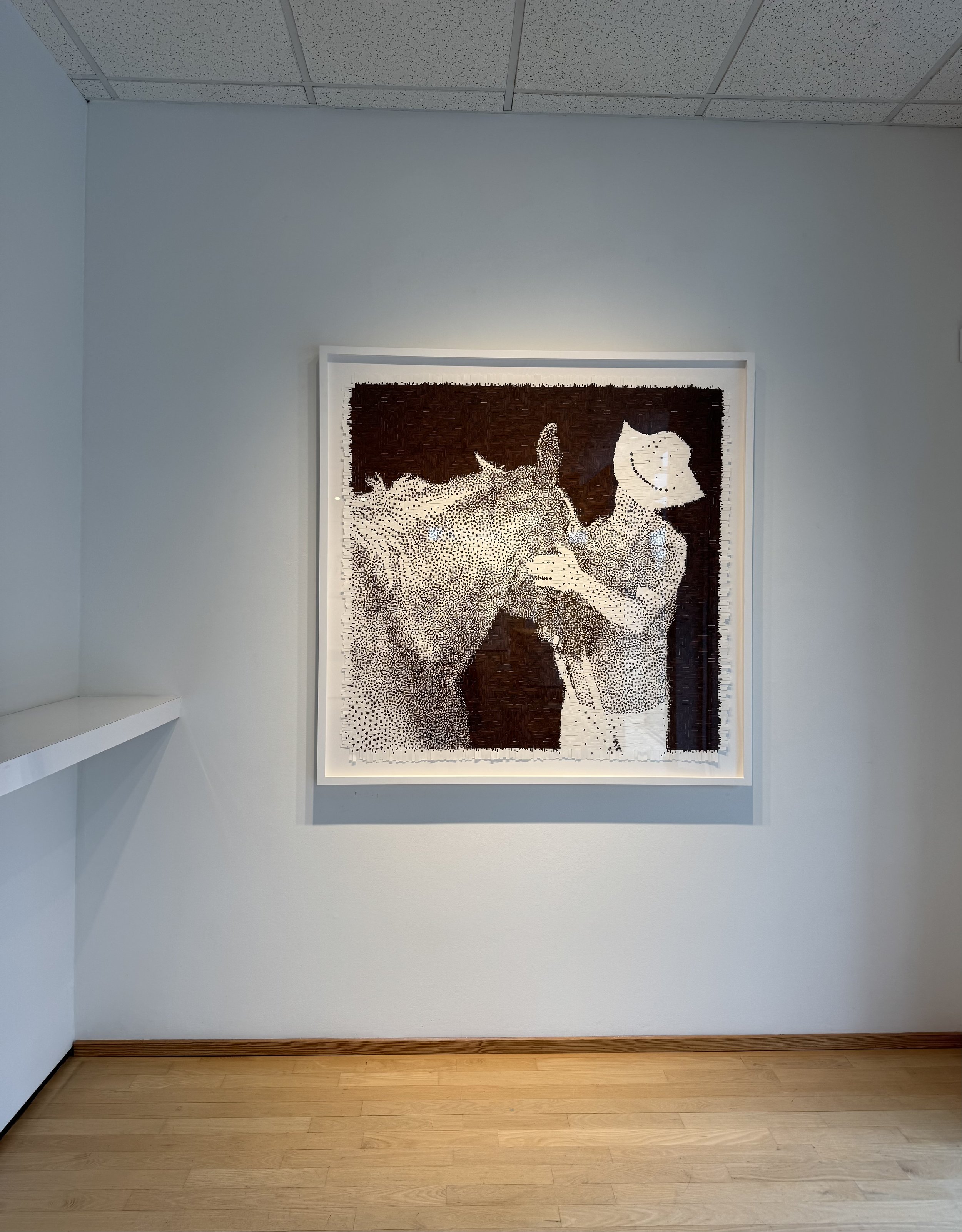spring is here in all it’s glory and we are ecstatic to open two solo exhibition of new works by jenny nelson and lilly whitman. jenny nelson is a long time artist at the gallery and an instructor of art at the woodstock school. her main focus is mark making to build up layers of oil paint to create balance and harmony on her abstract canvases. mark making refers to the act of leaving a visible trace or impression on a surface using various tool, materials and technique. she has honed her skills with a dedicated studio practice for decades. jenny is a very generous artist/instructor and teaches classes and workshops through woodstock + online.
always a special moment at the gallery when opening the first exhibition for a new artist and especially when we have watched them grow into their own. lilly whitman is a charlotte native who through her studies of architecture and studio art at harvard found her way into a mutiprocess painting technique that is completely her own. when we first laid eyes on her work we immediately were drawn into all it’s complexity and at the same time simplicity. by stripping down photographs and painting the resulting marks on hand woven paper she has combined different processes into a new exciting innovative technique. please help us welcome lilly whitman to the hbg family and we certainly look forward to introducing collectors to lilly’s paintings.
Jenny nelson
this much I know is true
jenny nelson attended maine college of art in portland, maine, and graduated with a bfa from bard college where she received a scholarship to the lacoste school of the arts in france. she has been living and working in woodstock, new york for 18 years. her early artistic training was focused on the classical and representational but it has always been her natural instinct to depict the surroundings in abstract forms. most of the paintings evolve as an intuitive reaction to her surroundings, be it interior space, inner space, or landscape. to evoke this kind of sensory memory in her work jenny applies many layers of paint, using gesture and an internal sense of color. traces of previous layers will remain visible, allowing colors to interact in ways they could not have anticipated. her compositions develop through a series of decisions that are both conscious and unconscious. with great sensitivity to these evolving colors and forms, a very personal abstract language emerges. she tends to focus on particular shapes or compositions for long periods of time resulting in a series of closely related paintings. the paintings are an ongoing process of addition and subtraction until everything on the canvas co-exists with a depth and intensity that seems balanced.
“i can’t remember a time when i wasn’t making things. it has always been my natural inclination to communicate visually. i knew at a young age that i wanted to pursue an education in the arts. i was lucky enough to finagle an enormous amount of time in art rooms throughout my school years. classrooms felt claustrophobic, and the art room was the only place i felt i could thrive. once out of college, i glued myself to a studio practice. i was painting from life, and then the work organically shifted towards abstraction.
the years i spent studying drawing and painting from the life, had instilled a strong sense of space and structure in my work. at some point the negative space surrounding objects became more interesting than what i was observing, and then i began modifying the objects themselves. an abstract language developed, but the sense of structure and organization has always remained a constant in the painting. now, my paintings begin in a chaotic way, smudges of color, and tangles of marks and lines. then i begin to organize this chaos through a series of subtractions and additions. layers of scraping, scratching, and re-finding. lines that have been obliterated and resurrected over and over have an emotional charge, and shapes have a story to tell. this conscious and unconscious decision-making process becomes more refined as the painting develops. shapes come and go, make friends, and enemies, and form relationships.
my interests shift compositionally, spatially, and with color and form as well. i will evolve a shape that seems to turn up again and again, and then it naturally morphs into something else, and i pick it up from there. I have a kind of studio mantra about infinity. I’m motivated by the thought of infinite possibilities. the idea that there are endless paintings and endless possible configurations of morphing forms to arrange. i love this magic part of painting, obsessive problem solving through focused observation, plus the willingness to try anything. each time a painting resolves, i feel like I’ve discovered something that was right in front of me just waiting to be found.”
Lilly whitman
playground
lilly whitman was born and raised in charlotte, north carolina, and is currently based in new york city. she graduated from harvard in 2022, where she studied architecture and studio art. lilly's work is playful and personal, with her current body of work drawing inspiration from photographs of friends and family. her artistic practice involves hand-cutting and weaving paper to create a unique foundation for each piece. the woven patterns are echoed in her mark-making, resulting in a texturally rich composition that evokes a digital visual effect.
“my process begins digitally, where i manipulate photographs to create halftones and adjust them according to image resolution and color. i was introduced to this technique in my silkscreen printing studio in college, where i became fascinated by the intricate silkscreening process.
to build a unique foundation for each piece, i hand-cut and weave paper. i began weaving in my first architecture studio at harvard, where we were challenged to create 3d forms using only paper and a knife. i employed weaving techniques to build textured organic shapes. since then, weaving has become an integral part of my practice. i draw inspiration for patterns from a wide range of sources—from outdoor dining chairs in new york to the patterns of sweaters, rugs, and tiles.
the final stage of my process involves manually “printing” the photographs, using the halftone image as a guide. i practiced stippling techniques with pens for years and i experimented with different marks as i scaled up. eventually, i began painting over my weavings, aligning my marks with the 90-degree patterns and paper strips.
while i use paint to create these pieces, i still consider them more like drawings or prints due to the nature of the process. this painstakingly manual process results in textured image with a digital flavor. ”
all available work by each artist can be viewed on our website under their individual tabs including sizing + pricing. hidell brooks gallery is by appointment. please call the gallery if you have any further questions.

